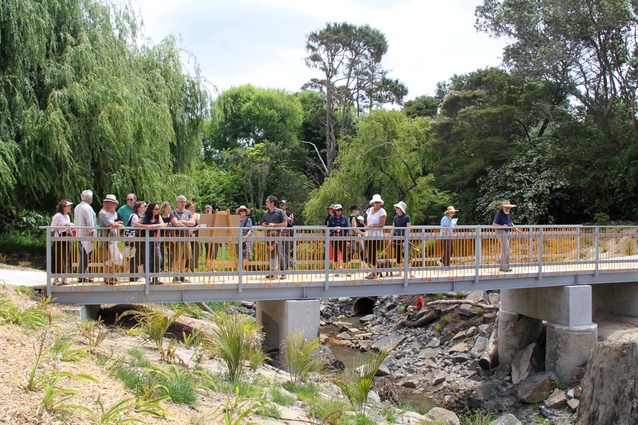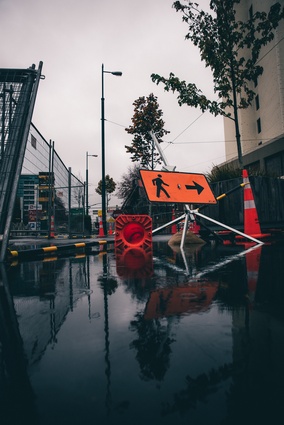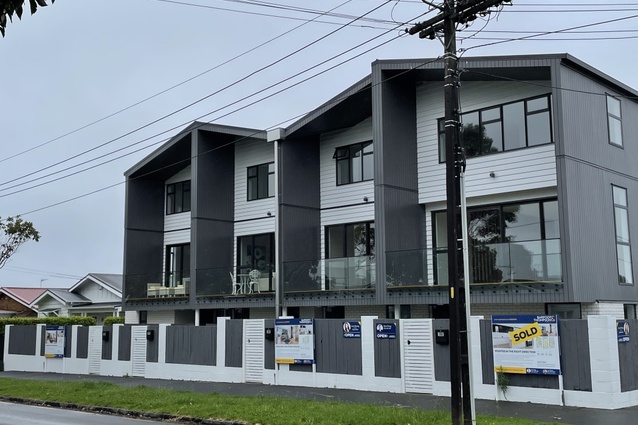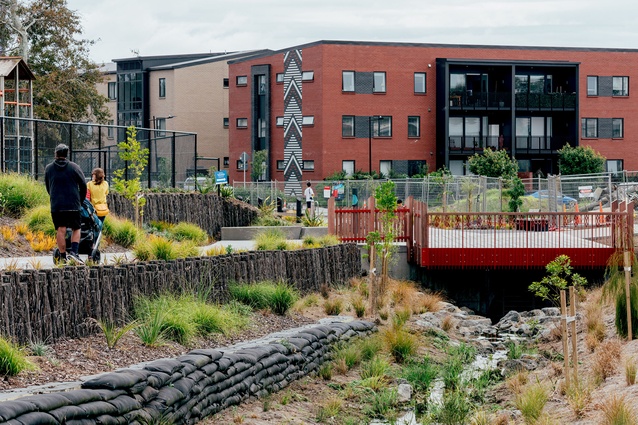Impervious vs absorbent
Chris Barton looks at the need for ‘sponge city’ and water-sensitive urban design to make our cities safe.
About 675,000 (one in seven) people across Aotearoa New Zealand already live in flood-prone areas, and this number will increase as rainfall increases, storms become more frequent and sea levels rise.” This sobering statistic from the recently released Sponge Cities: Can they help us survive more intense rainfall? indicates that, across the country, there are some 441,384 residential buildings, with an estimated replacement value of $218 billion, at risk of flooding.
The report by New Zealand public policy think tank, The Helen Clark Foundation, in conjunction with engineering consultancy WSP New Zealand, highlights the dire state of our “grey infrastructure” (pipes and drains) and the urgent need to adopt a ‘sponge city’ approach that makes space for water in our urban areas to help address what’s coming. That includes the creation of wetlands, the naturalisation, rehabilitation and daylighting of streams, rivers and lakes and the restoration of flood plains and major overland flow paths. It also means coming to terms with the managed retreat of something like 20,000 homes built in particularly vulnerable flood plains or in the way of overland flow paths to ensure these areas cannot be built on again.
But, while the sponge city approach makes sense in all sorts of ways, the report highlights that New Zealand is a slow starter in dealing with ongoing flooding risks due to climate change. In short, we’re not yet tracking this risk comprehensively or consistently, which “makes it very difficult to prioritise accurately which areas are most in need of attention, nationwide”. We’re also stuck in the past, relying on significantly ageing grey infrastructure to take stormwater away — an approach that’s all about defending people from nature rather than working with it.
The task ahead is enormous and very expensive. “Aotearoa New Zealand’s $20-billion water network infrastructure — including 17,000km of storm systems — was not designed for the huge volumes of water which they will have to manage with rising seas and increasing extreme rainfall events. Bringing all the country’s water networks up to scratch is expected to cost as much as $120–$185 billion over the next 30 years.” Compare that with the miserly annual spend by councils of around $1.5 billion on water pipes and you can clearly see we’re in trouble.
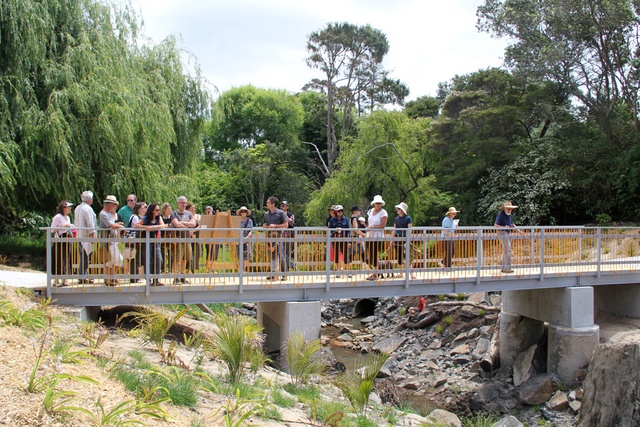
One of the key problems to overcome is our overriding tendency in city design to cover almost everything we can with concrete and asphalt in the form of roads, buildings, pavements and other infrastructure. The end result of more and more impervious surfaces is more run-off in heavy rain events and, as we saw in Auckland during the Anniversary Weekend floods, roads and footpaths suddenly becoming raging rivers.
Add to all this another unfortunate trend: the decline of green space in our cities. Green space per person fell 30 per cent in Auckland, for example, and 20 per cent in Hamilton between 1980 and 2016. The report also points to analysis by the Parliamentary Commissioner for the Environment showing that private green space in Auckland currently covering around 30.6 per cent of the city’s total urban area is predicted to fall to just 24.3 per cent coverage by 2043 on current settings. Two trends behind this decline are an increase in infill housing and a seemingly insatiable need to build bigger houses on smaller sections.
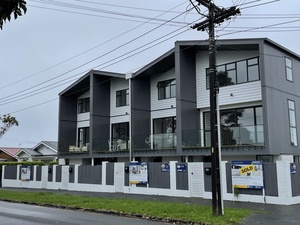
The situation only gets worse with the recently introduced Medium Density Residential Standards (MDRS), which allow three homes of up to three storeys on most sites. Those standards allow for new homes to be built that cover up to half of their total site area and for only 20 per cent of each site to be landscaped with grass or plants. In other words, 80 per cent of impervious surfaces is OK. Clearly, it’s not. The Parliamentary Commissioner for the Environment’s recommendation is to “leave a greater proportion of available land space within each section unbuilt and unsurfaced than is currently provided for in the MDRS”.
The Sponge Cities report says much the same: “Raise the national minimum standard for new developments for percentage of the development area that must be left unsealed. This should apply to both greenfield development and ‘infill’ development within existing residential areas.” A shame the report doesn’t suggest what this number should be.

Other recommendations in this report call for a new way of water-sensitive urban design (WSUD) thinking. That includes ideas to retrofit cities with green infrastructure, such as requiring inner-city buildings to have green roofs (rare to see) and, where possible, the unsealing of hard surfaces, such as pavements and car parking, with permeable paving and plants (yet to catch on in a big way).
Using different construction techniques such as building houses on stilts or pads to minimise soil disturbances is also suggested along with requiring new developments to deal with more rainwater in situ.
While there are encouraging signs of some councils accelerating blue-green infrastructure developments, it’s also clear that sponge city and WSUD thinking are far from the norm. Big shifts in design are always difficult but, if we want our cities to feel safe again when it rains, we need to move away from our reliance on bigger and better pipe dreams and start going with the flow.



